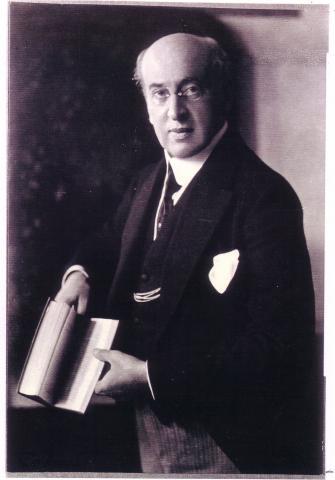The Hidden Force
In 'The Hidden Force' the decline and fall of the Dutch resident Van Oudyck is caused by his inability to see further than his own Western rationalism. He is blind and deaf to the slumbering powers of the East Indian people and countryside. The black magic, bird calls, vegetation, heat and the mysterious, hostile attitude of their Javanese subjects prove stronger than the cool power of the colonials.

Couperus began his literary career with the novel Eline Vere (1889) which is set in The Hague. This first book showed him to be an adherent of the naturalistic school but in his later work he would rise above its restricting edicts. In musical, sensitive tones (his word combinations, accents, exclamation marks and the three dots which follow important sentences or statements make his work instantly recognizable) he confronts his main character with the elusive but ever-present doom of ‘fate’. The universality of this theme helps to prevent his work from ever becoming dated.
The Hidden Force is also much more than a book about the chasm between white Westerners and warm-blooded Orientals. This problem plays an important role-Van Oudyck’s beautiful wife gives in to adultery but later becomes covered with red betel juice which unknown assailants spit at her in a classic bathroom scene, as if she has transgressed into a dangerous magical territory-but if the novel stopped there we would be dealing with a mere pamphlet. In fact The Hidden Force is haunted by a force which is even more hidden. Faced with their direct surroundings people only understand random scraps of an intangible whole, what they call life is nothing but a ripple in the pond of the world. Herein lies the novel’s true magic, and its universal scope means that The Hidden Force can still stand on its own merits almost a hundred years after its initial publication.
“His insight into the tragedy of European colonialism made Couperus a great writer. And his sympathy for the hybrid, the impure and the ambiguous gave him a peculiarly modern voice. It is extraordinary that this Dutch dandy, writing in the flowery language of fin-de-siecle decadence, should still sound so fresh.”
“'The Hidden Force' is a tragedy of colonialism essentially comtemporary with, and fully comparable to, the work of Joseph Conrad”
“The novel (…) is surprisingly fresh and lively. It’s astounding how early Couperus foresaw the end of the colonial period.”
“Couperus’ work was acclaimed by, among others, Katherine Mansfield and Sir Edmund Gosse. The latter, a close friend of Stevenson and Henry James, noted that “nothing about [Couperus] suggested the conventional Dutchman?”
